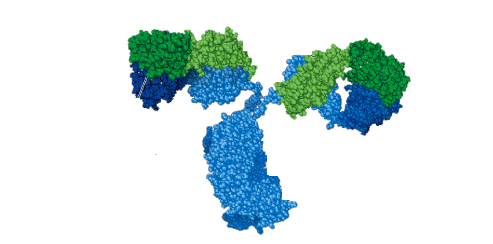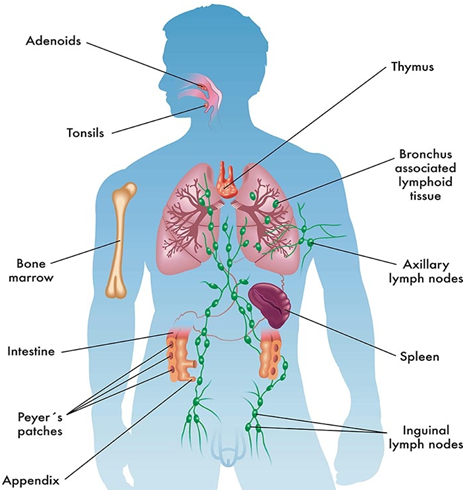The two basic forms in which antibodies can be produced in purified forms in the laboratory are as monoclonal antibodies and polyclonal antibodies. Monoclonal antibodies are homogenous antibodies produced in the laboratory by a single clone of cells (known as hybridoma cells), and all of which exhibit the same antigenic specificity. Hybridomas are cells capable of continues proliferation, and such cells possess the immortal growth features of cancerous plasma cells otherwise known as myeloma cells.
Monoclonal antibodies are produced by a single clone of hybridized B cells; and they are uniform in their structure and specificity because they all arose from the same line of B lymphocytes. Since an individual B lymphocyte is known to produce a specific immunoglobulin molecule in vivo, clones of such B cells can as well secrete homogenous antibodies with the same antigenic properties.
This is the rationale behind the production of monoclonal antibodies for clinical and other laboratory or industrial applications. Nevertheless, the B cells recovered from an excised lymph node cells or spleen has very limited or short lifespan and as such these B lymphocytes from immunized laboratory animals cannot be cultured in vitro to produce or secrete sufficient amount of monoclonal antibodies for clinical usage.
Since the advent of hybridoma technology, monoclonal antibodies can now be synthesized in sufficient large amounts. In the hybridoma technology of producing monoclonal antibodies, isolated B cells from immunized mouse are fused with myeloma cells from the same animal species in in vitro cell culture suspensions; and this produces hybrid B cell lines that are immortal in the production of homogenous antibodies (i.e. monoclonal antibodies) with uniform antigenic specificity.
The steps involved in the production of monoclonal antibodies are succinctly enumerated as follows:
- Inject or immunize a mouse with the antigen of interest.
- Allow immunized mouse for a couple of weeks to generate antigen-specific B lymphocytes for the secretion of antibodies in the mouse.
- Euthanize and remove the spleen or lymph nodes of the mouse.
- Extract the B cells from the homogenized spleen or lymph nodes.
- Fuse the extracted B lymphocytes with myeloma cells in in vitro cell culture techniques in suspensions. Addition of polyethylene glycol facilitates the fusion of the two cells.
- Add hypoxanthine, aminopterin and thymidine (HAT) to generate hybridoma cell lines.
- Hybridoma cells are isolated, separated and purified for monoclonal antibody production. Basically, the resulting clones of cells are screened in ELISA techniques for example in order to elucidate the production of specific antibody to the antigen of interest.
Monoclonal antibodies have a wide variety of applications as follows:
- Monoclonal antibodies are used for the analysis or typing of viral pathogens and other microbial cells from clinical specimens.
- Monoclonal antibodies are used as reagents for blood grouping experiments.
- Monoclonal antibodies are veritable tools in the production of therapeutic reagents.
- Monoclonal antibodies coupled with radioactively labeled probes can be used for the in vivo detection of cancerous antigens.
- Monoclonal antibodies are used in the production of rapid diagnostic test kits and reagents.
Polyclonal antibodies are heterogeneous antibodies produced from different clones of B cells. While monoclonal antibodies only recognize antigens with single epitopes, polyclonal antibodies recognize antigenic molecules with multiple antigenic determinant sites or epitopes.
Polyclonal antibodies are usually generated following the invasion of the body by antigens with multiple epitopes. Such antigens with multiple antigenic determinant sites stimulate the production of several B cell clones that proliferate and secrete heterogeneous antibodies specific for particular epitopes.
The reproducibility of polyclonal antibodies the same way monoclonal antibodies are generated is not feasible and this is due in part to the multiple antigenic determinant sites or epitopes associated with polyclonal antibodies. Polyclonal antibodies are mainly applied in the development of immunoassays for laboratory diagnosis of infectious diseases.
REFERENCES
Abbas A.K, Lichtman A.H and Pillai S (2010). Cellular and Molecular Immunology. Sixth edition. Saunders Elsevier Inc, USA.
Actor J (2014). Introductory Immunology. First edition. Academic Press, USA.
Alberts B, Bray D, Johnson A, Lewis J, Raff M, Roberts K and Walter P (1998). Essential Cell Biology: An Introduction to the Molecular Biology of the Cell. Third edition. Garland Publishing Inc., New York.
Bach F and Sachs D (1987). Transplantation immunology. N. Engl. J. Med. 317(8):402-409.
Barrett J.T (1998). Microbiology and Immunology Concepts. Philadelphia, PA: Lippincott-Raven Publishers. USA.
Jaypal V (2007). Fundamentals of Medical Immunology. First edition. Jaypee Brothers Medical Publishers (P) Ltd, New Delhi, India.
John T.J and Samuel R (2000). Herd Immunity and Herd Effect: New Insights and Definitions. European Journal of Epidemiology, 16:601-606.
Levinson W (2010). Review of Medical Microbiology and Immunology. Twelfth edition. The McGraw-Hill Companies, USA.
Roitt I, Brostoff J and Male D (2001). Immunology. Sixth edition. Harcourt Publishers Limited, Spain.
Zon LI (1995). Developmental biology of hematopoiesis. Blood, 86(8): 2876–91.
Discover more from #1 Microbiology Resource Hub
Subscribe to get the latest posts to your email.



